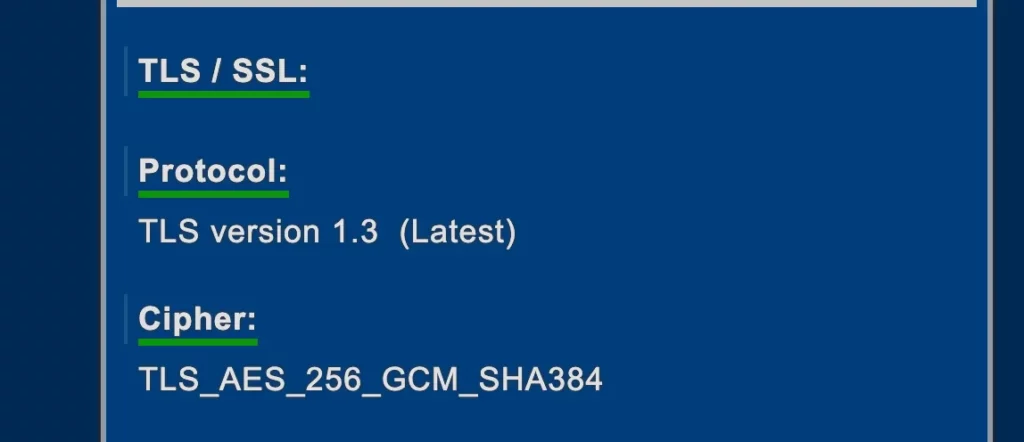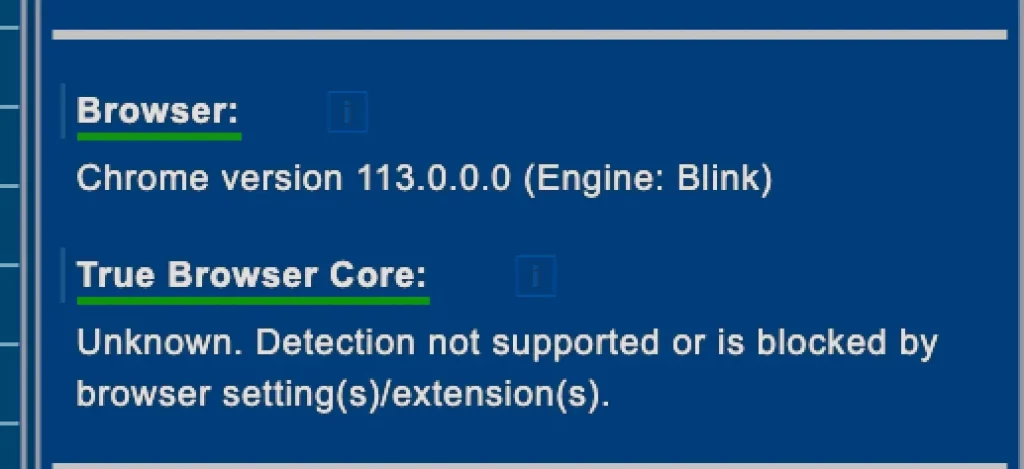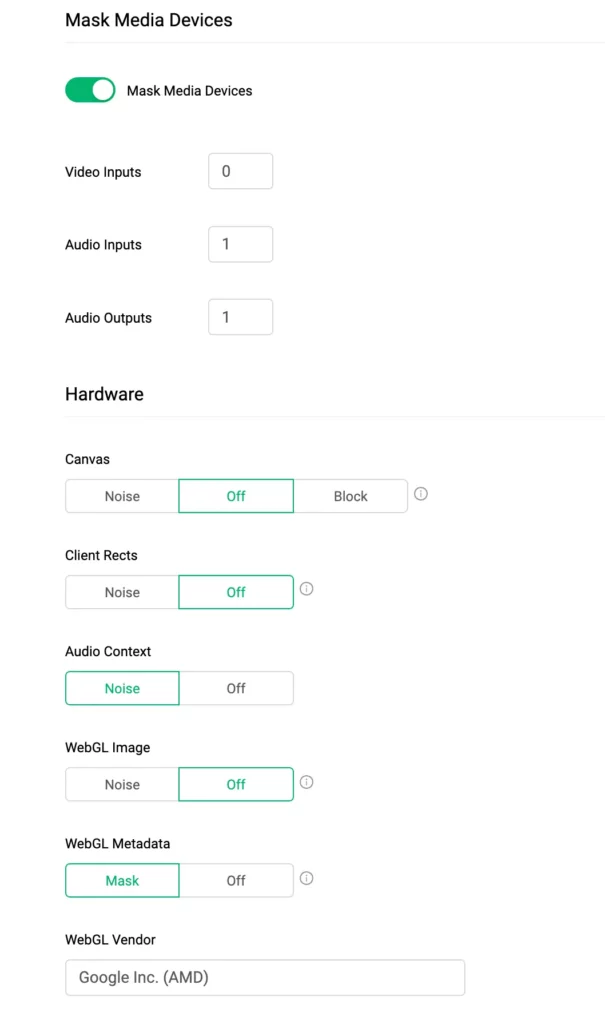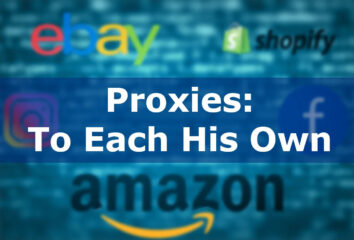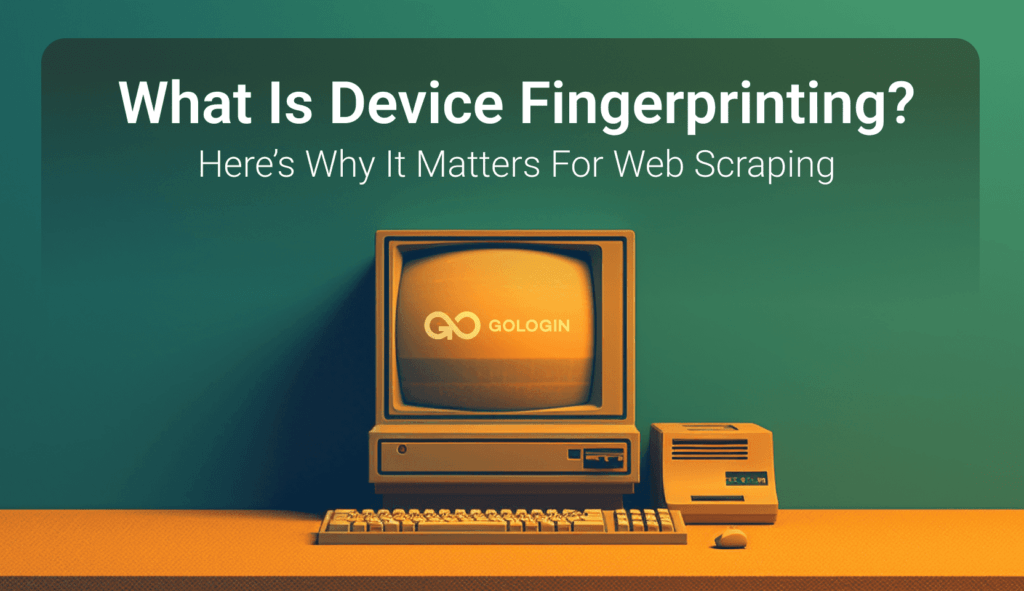
What is device fingerprinting, how it is used and why it’s important for web scraping?
Websites use device fingerprinting to identify devices using a combination of attributes provided by the device itself. This includes web browser and device configuration. In simple terms, it’s a unique device ID of sorts. The parameters collected to build the device fingerprint depend on the used solution, but typically the most common are:
- operating system
- screen size and resolution
- user agent
- system language and system country
- device orientation
- battery level
- installed fonts and installed plugins
- system uptime
- IP address
- HTTP request headers.
Most of these parameters are read from the browser settings. That means we can also use the more popular term “browser fingerprinting” with the same connotation.
Want to test which machine features are leaked from your browser just by browsing a web page? Visit Browserleaks online test to check with your eyes, simply with a Javascript executed on the server.
Also consider that most of the common anti-bot solutions use this basic information. They add some more complex test results, like Canvas and WebGL fingerprinting, to add even more details to these fingerprints.
Here’s the point: the more pieces I add to the fingerprint, the more granular it becomes. That’s because it’s less likely for two users to have the exact same device configuration. This way I can abstract a small niche of users with one fingerprint and track their behavior, without using cookies.
This is key in these times when cookies are under the scrutiny of GDPR, CCPA, and other internet regulations. Users are getting more aware of them, deciding to opt-out or wipe them from their machines. However, fingerprinting is not only a matter of marketing. It’s also anti-fraud and anti-bot areas in general that are involved in developing this kind of tech.
In fact, detecting fingerprints that contain some incompatible data or outliers in configurations, can raise some red flags in the traffic.
How a device fingerprint is collected?
As we have seen, a fingerprint is a collection of single pieces of information collected when a device connects to a server.
Depending on the method used for collecting this information, we can divide them by active and passive device fingerprinting work techniques.
- Active fingerprinting is when a server interacts with the device, using a challenge that the browser needs to solve. An example can be the Canvas fingerprinting or WebGL fingerprinting technique. In both cases, an image with a text overlay is rendered off-screen. On different hardware, this image and its result hash string are rendered differently, so we have different fingerprints for different hardware.
- Passive fingerprinting is when the server simply gathers the information passed by the browser and the different HTTP connection layers. These include IP address, request headers, user agent, screen resolution, operating system, and so on.
Modern anti-bot softwares combines both these families of techniques. They integrate them with behavioral analysis and AI to detect incongruences in the settings of the device and the scraper.
Mobile device fingerprinting is no different that usual, but it’s able to collect extra data points: battery level, GPS data, cell provider, installed apps and so on.
If you’re curious about the number and the type of information that can be gathered via your web browser, you can have a look at deviceinfo.me. It’s an online test where you can discover all these details.
As you can see from the following images, the description of your device is quite accurate.
Device Fingerprinting and privacy concerns
As we mentioned before, device fingerprinting solutions are gaining traction not only in the anti-bot industry. They work for marketing as well, since more and more people are concerned about cookie usage by websites. This technology is also widely used in banking for preventing fraud, especially credit card fraud.
Since it’s possible to accept or decline the cookie usage of websites and they can also be deleted, their efficiency for marketing purposes is declining. Browser fingerprinting stays an undeniable way to track user’s device information, and it’s hard to deal with – at least without special software.
You might be using a fingerprinting tool in your online marketing solution to identify and track users and then process that data with machine learning algorithms to later sell it to an online advertising firm. This might give a bit less granular detail than common users’ cookie collection. But the other side is – there’s no way to opt out from fingerprinting (yet).

Very specific clusters of customers can be created. For example, it can be “people from city X using the latest Mac laptop model, with a second screen and graphics card, browsing via Chrome v. 113 with Y extension installed, and connecting with ISP Z”. The variety of data points collected is incredibly wide.
It is such a detailed description that the European think tank about online privacy called Article 29 Data Protection working party, expressed its opinion about fingerprinting technologies and European personal data protection laws.
To make a long story short: collecting all these pieces of information from the browser to create a unique digital fingerprint makes the ePrivacy directive applicable to this technology.
This implies that visitors of a website, just like what happens for cookies, should be informed if there are any fingerprinting techniques used on the website, unless they are meant only to make the website work correctly.
How to mask your fingerprint
Having a look at the deviceinfo.me website, we can notice the several layers of information gathered to create a fingerprint.
Connection layer
A TLS fingerprint is created using the handshake packets that client and server exchange before establishing an HTTP connection, as seen in our previous article dedicated to TLS fingerprinting. It’s a quite common technique used by major anti-bot provider, as we can see from this Cloudflare article.
To avoid raising red flags when using a web scraper, you can use real browsers with Playwright or Selenium. These will use ciphers not in blacklist, or change ciphers in your Scrapy project’s settings.
Of course, the server knows also the IP address of the device who is connecting and can derive from it several additional info, like your country, state, ISP and so on.
We can change all these details by using a proxy provider and depending from your needs, you can use datacenter, residential or mobile IPs.
Browser layer fingerprint
Most of the other information used to fingerprint you are coming from your browser settings and how the browser reacts to Canvas and WebGL active fingerprinting.
Typically, if you’re trying to scrape a website protected by a modern anti-bot solution, you cannot use solutions like Scrapy, but you’ll need to use a webdriver, real or headless browser versions to bypass the protection.
In these cases, provide a plausible machine setup with no discrepancies in the settings. It is key to create a fingerprint that seems as legit as possible and extract data from a website effectively.
As an example, using Playwright and Chrome in headless mode should trigger some red flags, since it’s easy to detect. We can see exactly that from deviceinfo.me screenshots.
While in headful mode seems perfectly legit, while much more computing intensive.
Another example, connections from a server machine won’t show any microphone and camera.
But if you use anti-detect browsers like GoLogin, that allow you to create custom profiles the mimic different hardware and OS setups, you can send more plausible information to the server, creating a more legit fingerprint.
Final remarks on Device Fingerprinting
We have seen how many information are transmitted together with a simple browser connection to a website, and also how they can be used to both track users’ behavior and detect bots.
All these device fingerprinting techniques can raise some concerns about privacy, especially in countries where these information can be used to limit private freedom.
Luckily, we have several tools in our toolbelt to use to mask our real online traces. Some of them can be used also for our web scraping projects, as well as general private browsing.
In the next post of The Web Scraping Club we’ll make some examples with code, where we’ll mask our device fingerprint to bypass the most common anti-bot solutions.
This article was kindly provided by Pierluigi Vinciguerra, web scraping expert and founder of Web Scraping Club. Follow this link to see the original post.
Download GoLogin here and explore the scraping world with our free plan!
References:
- Xu Q. et al. Device fingerprinting in wireless networks: Challenges and opportunities //IEEE Communications Surveys & Tutorials. – 2015. – Т. 18. – №. 1. – С. 94-104.
- Kohno T., Broido A., Claffy K. C. Remote physical device fingerprinting //IEEE Transactions on Dependable and Secure Computing. – 2005. – Т. 2. – №. 2. – С. 93-108.
- Nikiforakis N. et al. Cookieless monster: Exploring the ecosystem of web-based device fingerprinting //2013 IEEE Symposium on Security and Privacy. – IEEE, 2013. – С. 541-555.
- Szmulewicz D. J. et al. CANVAS an update: clinical presentation, investigation and management //Journal of vestibular research. – 2014. – Т. 24. – №. 5-6. – С. 465-474.



